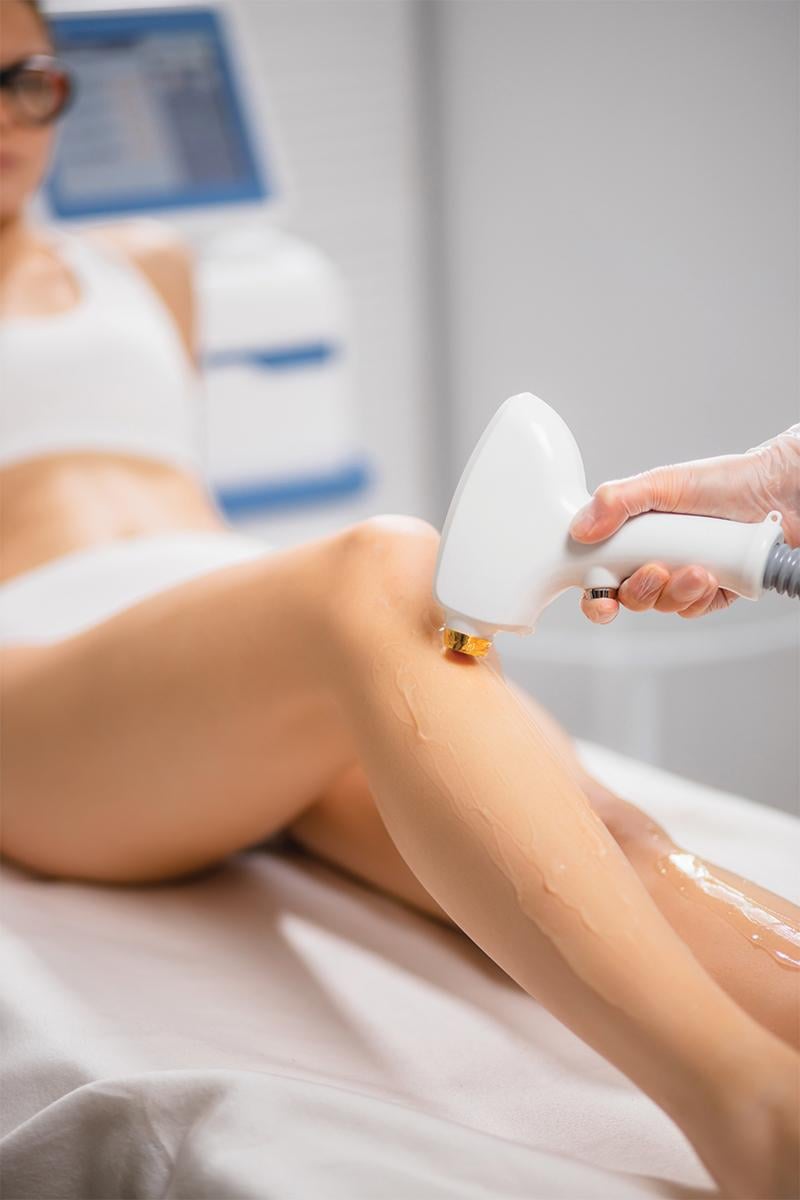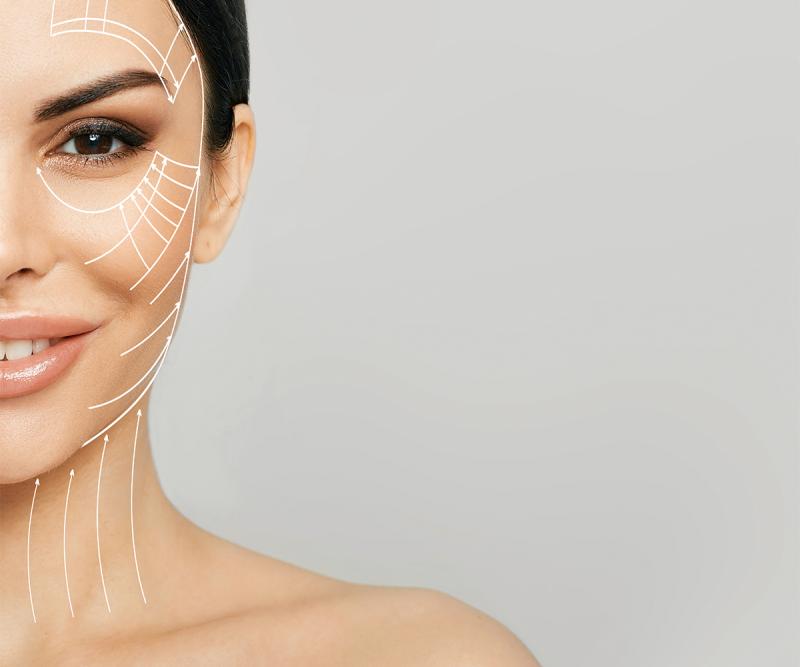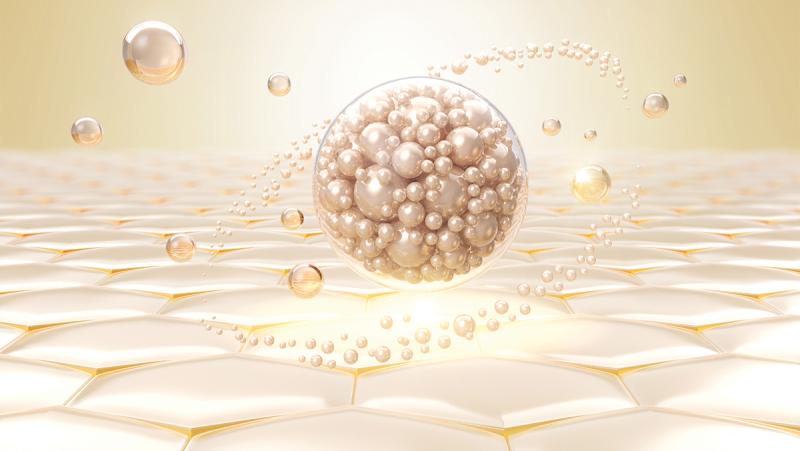Anti-Aging Technology
“There have been several new non-invasive and minimally invasive modalities that have been utilized to achieve lasting results when it comes to a more youthful outcome. The medical spa world has experienced a paradigm shift in the way both men and women have approached their ability to become ageless, in a time of stress, obesity, and toxic living. The medical spa industry is trending toward offering guests the opportunity to become involved in their own anti-aging process. There are opportunities to assist guests in such things as bioidentical hormone replacement therapies; customized, science-based, individualized weight loss therapies; virtually painless customized laser facial resurfacing; and in-office laser technology to remove fat volume to restore volume in areas where volume has been lost.”—Jeanine Thomas, DO, MSHS, owner of Devine Aesthetic Solutions (Arlington, TX)
Laser Therapy for Pain Relief

“Laser therapy’s popularity stems from its ability to address pain from multiple angles, offering a comprehensive approach to pain relief. It effectively treats various types of pain, including arthritis, muscular injuries, and chronic pain conditions. Laser therapy’s efficacy lies in its ability to enhance cellular energy, modulate blood flow, and stimulate the production of endorphins. By improving cellular energy production, laser therapy accelerates the healing process and aids in tissue repair, while modulating blood flow to reduce swelling and inflammation, common culprits in chronic pain scenarios. Furthermore, laser therapy stimulates the body’s production of endorphins and natural pain relief compounds, providing immediate pain relief and promoting a sense of wellbeing. Unlike pharmaceutical painkillers, laser therapy offers a non-invasive and holistic approach to pain management, aligning with the body’s innate healing mechanisms. It empowers patients to take control of their pain without the risk of side effects and dependency. The integration of laser therapy into pain management protocols marks a significant advancement in medical science. Its potential benefits, from reducing reliance on pain medications to accelerating recovery times, are immense. For practitioners and patients alike, embracing laser therapy represents a step toward a future where pain management is more effective, less invasive, and aligned with the body’s natural healing processes.” —Brandon Crawford, D.C., a Texas-based functional neurologist
Mini Facelifts

“All forms of mini facelifts are gaining in popularity today. Surgical techniques have improved significantly in recent years, making facelifts a far less invasive procedure, which can achieve natural and longer-lasting results. In addition, social media platforms amplified the positive effects that can be achieved with a mini facelift and made younger people more comfortable with the idea of getting cosmetic surgery. Many younger clients are requesting procedures that consist of a limited incision facelift in combination with a browlift to achieve an effect similar to tightly pulling their hair back. Since this type of a facelift is typically done for those with limited aging changes, the surgery is shorter, the incisions are limited, and the recovery is faster.”—Konstantin Vasyukevich, M.D., a double board-certified plastic surgeon and facelift expert based in New York City
Exosomes in Aesthetics

“As we look to the future, exosomes seem set to redefine aesthetic medicine. Exosomes are extracellular vesicles engaged in intercellular communication. They contain bioactive molecules, such as growth factors, cytokines, and nucleic acids, positioning them as key agents in tissue repair and rejuvenation. In aesthetic medicine, exosomes help stimulate collagen production, enhance skin texture, and address aging signs without invasive procedures. A primary application of exosomes in this field is skin rejuvenation. As aging progresses, collagen and elastin production decreases, causing wrinkles and sagging skin. Exosomes can prompt fibroblasts to produce collagen and elastin, countering these aging effects. Unlike traditional dermal fillers, exosome treatments offer a natural solution by tapping into the body’s repair mechanisms. Exosomes also tackle hyperpigmentation and uneven skintone. Overproduction of melanin can lead to sunspots and age spots. Exosomes help regulate melanin, resulting in balanced skin. This method is more effective than temporary topical treatments. Exosomes can amplify the results of other aesthetic treatments. When combined with micro-needling, laser therapy, or platelet-rich plasma (PRP) therapy, they speed up healing and enhance results, showcasing their adaptability in aesthetic care. Safety is of utmost importance in aesthetic medicine, and exosomes excel in ensuring this. Different from traditional dermal fillers or Botox injections, exosomes originate from either the patient’s own cells or ethically sourced donors, minimizing the risk of allergic responses or unintended side effects. Their non-surgical approach leads to faster recovery and limited complications, positioning them as a suitable choice for many patients. It’s important to recognize that, despite the potential of exosome-centric treatments, comprehensive research and clinical evaluations are crucial to decipher their full range of effects and mechanisms. Regulatory authorities also need to put forth precise guidelines for their application, ensuring both safety and effectiveness in treatments.”—Jacob D. Steiger, M.D., double board-certified facial plastic surgeon and owner of Steiger Facial Plastic Surgery (Boca Raton, FL)